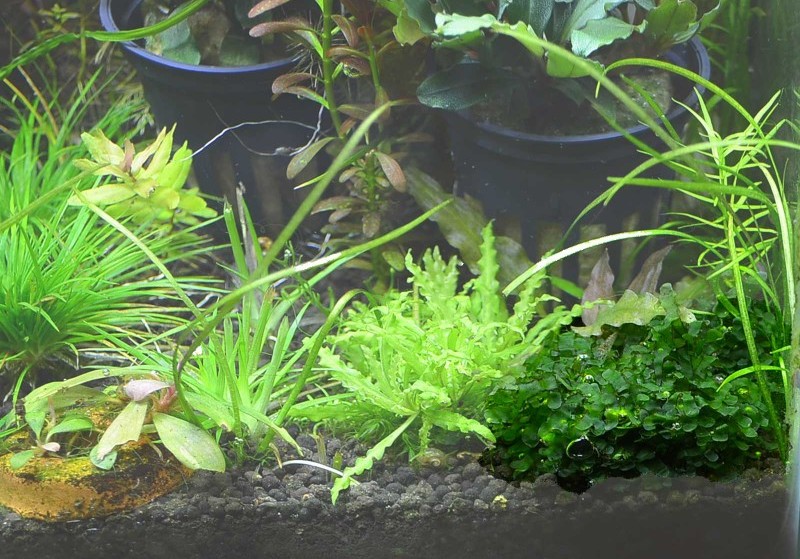Moss lomariopsis is an interesting ornamental plant, quite simple in maintenance and care. It is considered a botanical curiosity due to the fact that it looks like hepatic moss pelium. In fact, neither the algae, nor the moss, the linear is not. Lomariopsis is a fern. It is distinguished from the pellet by more elongated and rounded overgrowths, as well as the absence of central veins on them. In this article, we will examine in more detail the conditions for keeping this plant in aquariums.
Where dwells in nature
Moss lomariopsis linearis grows in Malaysia, China, the Philippines, New Guinea, America, Australia, Africa. Beautiful green bushes were found in reservoirs with clean, fresh and slowly flowing water. Aquarists from Russia met this species of fern in the early 2000s. Since that time, lomariopsis has been very popular, which is due to its unpretentiousness and beauty.
What does it look like
The appearance of this plant is quite unusual and decorative. Fern is somewhat reminiscent of seaweed. The shape of lomariopsis is spherical, and its size in the aquarium reaches 10 by 10 cm, in the natural environment - 20 by 20 cm.
The lineata grows very slowly, gradually acquiring the appearance of lush beautiful green hills. The leaves and roots of the fern do not rot.
Aquarium design
Moss lomariopsis is often used to decorate home ponds of all kinds and sizes, including Dutch and Nano. It looks best in the middle or background. If desired, it is permissible to grow in the foreground.
Many beginner aquarists are wondering how to tie moss lomariopsis? This is done with the help of nylon threads, and it is attached to stones, snags and any other decorative elements.
The fern grows very well, does not emerge, and eventually turns into lush green hills, in which shrimps, fish fry and other small animals hide.
In addition, with the help of moss lomariopsis, you can create a green meadow. For this, a thallus is laid on the bottom, and a grid is placed on top of it. After some time, the fern grows and the grid will not be visible.
It must be borne in mind that this plant is shade-loving, so other inhabitants of the aquarium should be selected to match it, so that lomariopsis does not suffer from an overabundance or lack of light.
Gluttonous and large herbivorous fish, such as cichlids, which easily and quickly eat it to the very root, should also be avoided.
The necessary conditions
The content of moss lomariopsis in the aquarium is not difficult. That is why even novice aquarists can learn to grow it. Some features of care are noted below:
- The dimensions of the reservoir itself are not of particular importance. It can be kept both in gigantic containers and in miniature home aquariums.
- The best characteristics for water: temperature from 18 to 30 degrees, acidity in the range of 6.5-8, and hardness not less than 2, but not more than 30.
- It is worth knowing that in soft water, fern grows more intensively. It is recommended to add CO 2 in addition. Mineral supplements are not needed.

- Optimum lighting 0.3-0.4 W / l. If you increase the time spent in direct sunlight or enhance lighting, the moss lomariopsis will darken, the foliage will become smaller, and growth will slow down significantly. But the fern tolerates weak light and survives where other plants die.
- Lineata has a distinctive feature - rather slow growth. Therefore, the whole beauty of the plant can not be quickly seen, it will take a long time.
- The advantage of keeping moss lomariopsis is the lack of the need to transplant it often. The lower part does not die or rot.
Disease
The plant does not suffer from diseases, but there may be a problem with the algae attached to it, which will reduce the decorative effect of lomariopsis due to parasitization on it.
The easiest way to get rid of this problem is to periodically rinse the moss in running water, independently removing the algae. Experts do not recommend the use of hydrogen peroxide.
Some aquarists get rid of parasites by using microscopic crustaceans - ostracods. But you should know that they multiply very quickly, so they can be bred only if there are fish in the home pond that feed on these crustaceans.
Breeding and care
After fixing the lomariopsis bush in the aquarium and then rooting it, the aquarist no longer needs to do anything with it. In the event that the plant grows strongly, it can be divided into several parts and planted in different places.
Propagation of moss occurs in two ways:
- Disputes. First, a small sprout appears from one spore, and after a couple of weeks a seedling in the form of a heart emerges from it. But this is not the bush itself, it will appear a little later.
- By dividing the bush. This method is used more often than the previous one and is common for breeding in home aquariums. Ideally, moss lomariopsis should look like a neat ball. If a large green cap appears in a pond, then this serves as a signal for planting. A large bush is neatly torn into several parts and placed in selected places.
Conclusion
Lomariopsis lineata is suitable for those who want to transform their aquarium and add a twist to its design. And also to those who want to learn a new plant. Beautiful green fern bushes will decorate a home pond. In addition, the fern does not require much effort to maintain it in excellent shape. Breeding lomariopsis does not require much experience, even a novice can cope with it.